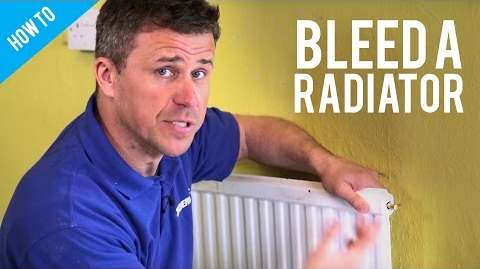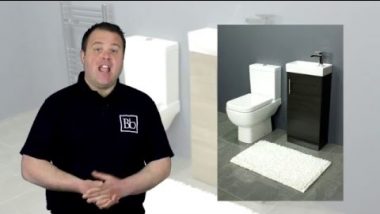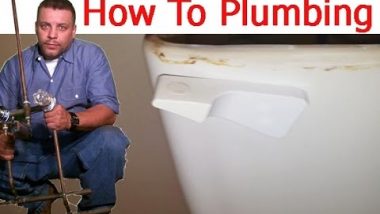Today we are going to explain how to bleed your radiators. The easy tool you are going to require is a radiator key.
You are going to need to use this to turn the little grommet end at the top of your radiator. Turn it anti-clockwise by about a quarter of a turn. Wait until the hiss stops, and close the valve again quickly. Naturally, before you do this you are strongly advised to lay dust sheets on the floor below the radiator and also to have a cloth ready to mop up any accidental water escapes.
Now some modern-day radiators do not, in fact, require a radiator key to bleed them. These radiators simply have a little slot in them so that you can open them to vent air, using a flat headed screwdriver.
“Bleed a radiator whenever it is not warming up properly”
By that, we imply that before you bleed a radiator, you will tried turning your central heating right up, to approximately full heat, but you will have found that even then, you are not feeling the full advantage from the radiators. The lower parts of the radiator will be warm or hot, but the top remains at best only tepid or may remain cold to the touch.
The easy test you have to do is feel the radiators at the bottom. If working properly they are most likely to be good and hot. If however, they are hot only around the hot water delivery pipe, where the water enters. As you move your hand higher up the radiator it begins to get cooler. By the time you get to the top, it is actually cold up there.
The phenomenon that is occurring is like that as that hot water cannot get up to the top of the radiator due to the fact that there is air caught therein. That air has to be bled out before the top of the radiator can work properly.
The answer to this is to bleed off the air, and as the air disperses outward, water will fill the whole radiator from top to bottom.
The way to do this and bleed each radiator is to get your radiator key. Turn it strongly anti-clockwise. Continue to turn it and open it up until it is fully open. But don’t let the whole valve fitting come out. If needed, you may need to get a cloth on it to give it a good turn and make it open.
That’s it! Air begins hissing from the radiator About half a turn now, I can hear the air starting to come out of there. As that air is hissing it’s method external that warm water is beginning to rise here now. You usually can feel the difference of warmth rising up inside the radiator as it fills.
In some cases, this can take 20, 30 seconds, sometimes as much as a minute. Now I can still hear the air coming out, remember it is rather a big radiator. There is a fair little air in there. Have your fabric at hand because any minute now your water will start to come out through the bleed valve. There it is now, you can see the water has actually begun to come out.
Wait up until you believe that all that hot water has actually worked it’s way up, and there is no more air therein. At that time, you put your key back in great and tight, and turn that so it closes it back up.
Make certain the bleed-screw really is good and tight. Check twice that there is no more water coming out from there.
Now it is done. That usually works completely successfully! I can right now as I write this currently feel the warmth rising all the way to the radiator top.
Now if you would like to see some more details, or some DIY ideas and some valuable, how to videos, please check out SilverlineTools.com.
Ways to Tell When a Radiator Needs Bleeding – Step by Step Version
Firstly we see if the radiator is cold at the top or the bottom. If it’s cold at the top that indicates there’s air in the system so we will have to bleed the radiator.
Noisy Banging in a Radiator and How to Bleed a Heating Radiator
Does banging in the pipework seem like somebody is running a sledgehammer along it? If so, attempt this simple DIY fix. You will require A radiator A towel and a bleed key.
Action 1. Turn off the heat and wait up until the radiator cools.
Action 2. Find the bleed valve. It is a circular valve with a square protrusion from its centre.
Action 3. Hold the towel below the valve to catch any water that leaks out.
Action 4. Insert the bleed key and turn it one-quarter turn counter-clockwise. When you hear the hissing of emitted air, you have actually effectively opened the valve.
Action 5. Turn the valve one-quarter turn clockwise once the hissing has completely stopped and the very first drop of water exits the valve and the sound has dissipated. (Bleed your radiator every 6 months as normal preventative upkeep.)
Action 6. Contact a professional heating specialist if issues persist.
Bleeding a Radiator and What to do if Bleeding a Radiator Does Not Solve the Air-Lock Problem
To do this, initially shut off your central heating then put a rag below the valve to capture any water.
Rotate the radiator key, or your screwdriver, anti-clockwise about a quarter of a turn till the air hiss stops and the water runs quietly, then close the valve.
Turn the heating system on again, and your issue ought to be fixed nevertheless if it’s cold at the bottom you might have developed a build-up of sludge. Sludge deposits site in the bottom of radiators like a type of gunge inside your radiator. This sludge usually consists of a mixture of air, water and metal corrosion.
If you discover you have cold areas continually at the bottom of your radiators you will have to call one our engineers out. If you are having issues with this and want to book one of our engineers please visit our internet site.





People should not repressurise their systems if they don’t know the right pressure to set them to. Look up your boiler instructions to check the pressure to use. Many overcharge their central heating. This causes nasty stains down the outside walls of buildings. These are unsightly. Systems should not be left with recharging hoses attached.
Which radiator should you bleed first. I was always taught to bleed the highest radiator first working down to the lowest purely because over time the warm air that’s in the system will rise and collect at the highest point.
Which radiator is it best to bleed first? I was taught to bleed the highest radiator first working down to the lowest purely because over time the warm air that’s in the system will rise and collect at the highest point.
People should not re-pressurise systems if they don’t know what pressure to set. Many over charge the pressure causing the pressure release valve to operate. Nasty stains down the outside wall of buildings can be the result of this. Systems should not be left with recharging hoses attached. PRV valves seldom reseat themselves properly and this can lead to more pressure loss. If not a combi boiler based system, turn the pump off then start at the highest radiator first, and work down. Also add some inhibitor to the F&E tank whilst bleeding.
important to note that when I bled my rads the little plug thing dropped out and I lost it. Don’t lose it. You will have a wet floor if you do. Close radiator valves quickly if this happens.
I must say it was good to find your page in google.
You write some good content and this one on bleeding a radiator was useful to me.
But you missed something out.
When I did it my boiler cut-out, and I found the system pressure was too low,
so tell your readers that if the boiler stops working, to let more water pressure
into the combi-boiler until the dial put it back into the green band.